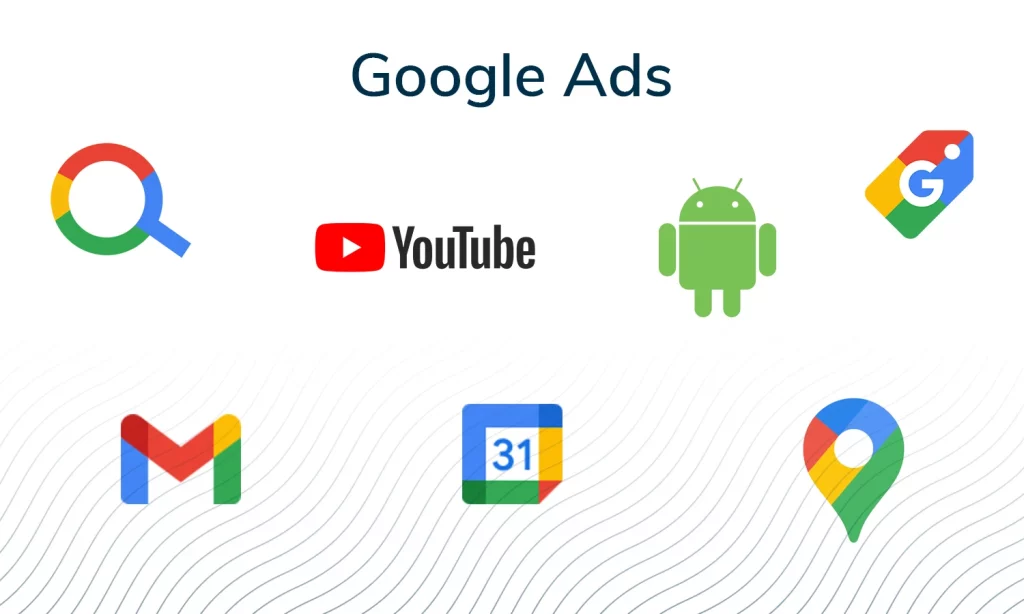What is Copywriting?
Whether you’re a solopreneur or a big company, copywriting is essential for marketing success. But what exactly is copywriting? Copywriting is the art and science of writing persuasive sales copy. It’s an important skill to have because it can help you sell more products or services, grow your business, and make more money.
There are different types of copywriting, but all of them share one common goal: to persuade the reader to take action. The action could be anything from buying a product to signing up for a newsletter.
Copywriting is not easy. It takes practice and knowledge of human psychology. But if you understand the basics, you’ll be well on your way to becoming a successful copywriter.
History of Copywriting
The term “copywriting” was first coined by advertising executive John E. Kennedy in a 1926 issue of Printers’ Ink magazine. Since then, the practice of copywriting has evolved significantly, thanks to the advent of new technologies and the ever-changing landscape of marketing and advertising.
Today, copywriting is more important than ever before. With the rise of digital marketing, businesses must now contend with an ever-growing amount of content competing for attention online. To stand out from the crowd, they need to create compelling copy that speaks directly to their target audience.
The Different Types of Copywriting
There are four main types of copywriting: direct response, brand marketing, lead generation, and content marketing.
Direct Response Copywriting
Direct response copywriting is all about getting the reader to take a specific action, such as buying a product or signing up for a service. It’s usually short and to the point, with a strong call to action.
Brand Marketing Copywriting
Brand marketing copywriting is focused on building awareness and trust in a company or product. It’s often longer and more emotional than direct response copywriting.
Lead Generation Copywriting
Lead generation copywriting is designed to capture the reader’s contact information so that you can follow up with them later. The goal is to get the reader interested enough in what you have to offer so that they’re willing to give you their email address or phone number.
Content Marketing Copywriting
Content marketing copywriting is about creating informative and valuable content that will help you attract and retain customers. It’s usually longer than other types of copywriting, and it often takes the form of articles, blog posts, or eBooks.
Importance of Copywriting
Copywriting is important because it can make or break your marketing efforts. Compelling copy is essential for creating successful ad campaigns, driving website traffic, and generating leads and sales.
Unfortunately, many businesses don’t place enough importance on copywriting. They either don’t invest the time or resources necessary to create high-quality copy or they simply don’t understand its importance. As a result, their marketing efforts fall flat and they fail to achieve their desired results.
If you want your business to succeed, you need to take copywriting seriously. By investing in quality copy, you’ll be able to reach more people, build better relationships with your customers, and ultimately drive more sales.
How to Write Persuasive Copy
The first step is to understand the psychology behind persuasion. Persuasion is the process of convincing someone to do something that they wouldn’t otherwise do. It’s a complex topic with a lot of nuances, but there are three main psychological principles that all persuasion must adhere to: reciprocity, authority, and scarcity.
- Reciprocity is the idea that we feel obligated to repay someone who has done something for us. For example, if you receive a gift from someone, you’ll feel obligated to return the favour.
- Authority is the belief that we should do what people in positions of power tell us to do. For example, we’re more likely to obey a police officer than a random stranger.
- Scarcity is the belief that we should act now because opportunities are limited. For example, if you see a “limited time only” offer, you’ll be more likely to take action because you don’t want to miss out.
Copywriting Tips and Tricks
Now that you know the basics of copywriting, here are a few tips and tricks to help you write better copy:
Write headlines that grab attention
Your headline is the most important part of your copy. It’s what will determine whether or not people keep reading. So make sure it’s interesting, benefit-focused, and makes use of powerful words like “free,” “new,” and “you.” You can do so by:
- Using keywords: One of the best ways to ensure that your headline is optimised for search engines is to include keywords. This will help your content show up in relevant searches.
- Keeping it clear and concise: A headline that is clear and to the point is more likely to be read than one that is confusing or rambling.
- Avoiding clickbait: Clickbait headlines are those that are designed to get clicks but don’t deliver on the promise of the headline. This can result in a high bounce rate, which is bad for your content.
- Testing and optimising: Once you’ve written your headline, it’s important to test and optimise it to ensure that it’s performing as well as possible. This can be done with things like A/B testing and analytics tools.
Use short sentences and paragraphs
People have short attention spans, so make your copy easy to read by using short sentences and paragraphs. Breaking up your text will also make it more visually appealing and help guide the reader’s eye.
Use active voice
Active voice is more persuasive than passive voice. For example, “I bought a new car” is in active voice, while “A new car was bought by me” is in passive voice. Active voice is shorter, simpler, and more direct, which makes it more likely to persuade the reader.
Use strong verbs
Weak verbs like “is,” “are,” and “were” are uninteresting and uninspiring. So instead of using them, choose strong verbs that convey emotion and power. For example, you could use words like “boost,” “double,” or “transform.”
Appeal to emotion
People make decisions based on their emotions, not logic. So if you want to persuade someone to take action, you need to appeal to their emotions. Use
- Storytelling: Storytelling is one of the best ways to appeal to emotions in copywriting. This involves creating a narrative around your product or service that will resonate with your reader on an emotional level.
- Images: Images can also be used to appeal to emotions. Using images that are evocative or stirring can help create an emotional connection with your reader.
- Video: Video is another powerful tool that can be used to appeal to emotions. Videos have the ability to tell a story in a way that text alone cannot, and they can be very effective in creating an emotional connection with your audience.
- First-person narratives: First-person narratives are another effective way to appeal to emotions. This involves using the first-person point of view to tell a story about your product or service. This can help create an emotional connection with your reader as they feel like they are experiencing the story firsthand.
- Emotional language: Another way to appeal to emotions is to use emotional language in your copywriting. This means using words that evoke emotions, such as happy, sad, afraid, or angry.
Use social proof
Social proof is the idea that we’re more likely to do something if we see other people doing it. For example, if you see a restaurant with a long line out the door, you’re more likely to assume it’s good and want to eat there.
You can use social proof in your copy by including testimonials, reviews, or customer logos. Seeing that other people have had a positive experience with your product will make prospects more likely to buy from you. More comprehensively, use:
- Testimonials: Testimonials are one of the best ways to use social proof in copywriting. This involves including a quote from a satisfied customer that speaks to the quality of your product or service
- Reviews: Reviews are another effective way to use social proof. This involves using quotes from third-party sources that review your product or service.
- Social media statistics: Social media statistics are another form of social proof that can be used in copywriting. This involves using numbers and data from social media platforms to show how popular your product or service is.
- Celebrity endorsements: Celebrity endorsements are another form of social proof that can be used in copywriting. This involves using quotes or images from celebrities who have used or endorse your product or service.
- User-generated content: User-generated content is another form of social proof that can be used in copywriting. This involves using images or videos that have been created by customers or users of your product or service.
Make use of urgency
As we mentioned before, people are more likely to take action when they feel a sense of urgency. You can create a sense of urgency by including words and phrases like “limited time only,” “while supplies last,” or “act now.” More extensively, use:
- Countdown timers: Countdown timers are one of the best ways to use urgency in copywriting. This involves using a timer that counts down the time until an offer expires.
- Limited-time offers: Limited-time offers are another effective way to use urgency in copywriting. This involves offering a discount or bonus that is only available for a limited time.
- Scarcity language: Scarcity language is another way to use urgency in copywriting. This involves using words and phrases that indicate that something is in limited supply.
- Urgency phrases: Urgency phrases are another way to use urgency in copywriting. This involves using phrases that indicate that someone needs to take action now.
- A sense of urgency: A sense of urgency is another way to use urgency in copywriting. This involves making it clear to the reader that they need to take action now in order to get the desired result.
Use numbers and statistics
People are more likely to believe something if it’s backed up by data. So if you have any numbers or statistics that support your claims, make sure to include them in your copy. For example, you could say something like “97% of customers were satisfied with our product.”
Write for your audience
It’s important to remember that not everyone is going to be interested in what you’re selling. So don’t try to appeal to everyone. Write your copy specifically for your target audience. Use the language they use and address their specific needs and pain points.
Test, test, test
The only way to know for sure what works and what doesn’t is to test different versions of your copy. Try changing up your headlines, images, calls to action, or offer. Then track your results and see which version performs better.
Copywriting is an essential skill for any marketer or business owner. By following the tips in this guide, you can write better copy that will help you achieve your business goals.
Common Mistakes in Copywriting
There are a few common copywriting mistakes that you should avoid, including:
Not doing your research
One of the biggest mistakes you can make is not doing your research. This includes things like keyword research, competitor research, and audience research. Use:
- Google: Google is one of the best ways to conduct research for copywriting. This involves using the search engine to find information about a product or service.
- Social media: Social media is another effective way to conduct research for copywriting. This involves using platforms like Facebook, Twitter, and Instagram to find information about a product or service.
- Forums: Forums are another way to conduct research for copywriting. This involves using platforms like Reddit and Quora to find information about a product or service.
- Customer reviews: Customer reviews are another way to conduct research for copywriting. This involves using platforms like Amazon and Yelp to find information about a product or service.
- Competitor analysis: Competitor analysis is another way to conduct research for copywriting. This involves using tools like SEMrush and Moz to find information about a product or service.
Not being clear and concise
Another mistake is to write copy that is confusing or rambling. It’s important to be clear and to the point in order to keep your reader’s attention. Use:
- Short sentences: Short sentences are easier for the reader to understand. This is because they are not overloaded with information.
- Active voice: Active voice is easier for the reader to understand. This is because it uses fewer words and is less complicated.
- Simple words: Simple words are easier for the reader to understand. This is because they are not loaded with meaning.
- Bullet points: Bullet points are easier for the reader to understand. This is because they highlight the important information.
- Headlines: Headlines are easier for the reader to understand. This is because they grab the reader’s attention and make them want to read more.
Not using calls to action
A call to action (CTA) is a statement or image that encourages your reader to take a desired action, such as signing up for a newsletter or making a purchase. Including a CTA in your content can help increase conversion rates.
Not proofreading
Once you’ve written your copy, it’s important to proofread it before publishing. This will help ensure that there are no errors or typos, and that your content is clear and easy to read.
Not promoting your content
In order for your content to be successful, you need to promote it. This can be done through things like social media, email marketing, and paid advertising.
Popular Tools for Copywriting
There are a number of popular tools and resources available to help you with your copywriting efforts. Here are a few of the most popular:
Google Keyword Planner
This free tool from Google can help you research and select the right keywords for your campaigns.
BuzzSumo
This paid tool allows you to see the most popular content in your niche, so you can get ideas for your own copy.
CoSchedule Headline Analyzer
This free tool grades your headlines and provides tips for making them more effective.
Copyblogger Authority
This paid course from Copyblogger will teach you everything you need to know about copywriting.
The Ultimate Guide to No-Pain Copywriting
This free ebook from Copyhackers will teach you how to write copy that sells without resorting to hype or manipulation.
Advanced Marketing Institute’s Headline Analyzer
This free tool will help you write headlines that are more effective at grabbing attention.
Kopywriting Kourse
This paid course from Neville Medhora will teach you how to write copy that sells.
Copyhackers
This website is packed with free resources and articles to help you write better copy.
Quora
This Q&A platform can be a great place to get ideas for your copy, as well as feedback from others.
The Copywriter’s Handbook
This classic book from Robert Bly is considered the bible of copywriting and is a must-read for anyone serious about mastering this skill.
Google Trends
This free tool from Google allows you to see how popular certain keywords and phrases are.
HubSpot’s Blog Topic Generator
This free tool can help you generate ideas for blog posts and articles.
Answer the Public
This free tool allows you to see what questions people are asking about your keywords.
Portent’s Content Idea Generator
This free tool generates ideas for blog posts, articles, and even infographics.
SEOmoz’s Title Tag Preview Tool
This free tool allows you to see how your title tags will appear in search results.
Content Idea Generator
This paid tool from Contently allows you to generate ideas for blog posts, articles, and even social media updates.
ideaFLESH Content Idea Generator
This paid tool helps you generate ideas for all types of content, including blog posts, articles, white papers, and ebooks.
Brainstormer
This paid tool from Big Think allows you to generate ideas for all types of content, including articles, blog posts, infographics, and even videos.
Scribe by Copyblogger
This paid tool analyzes your website content and provides suggestions for making it more effective.
Copyhackers Instant Headline Analyzer
This free tool analyzes your headlines and provides tips for making them more effective.
Sharethrough Headline Analyzer
This free tool analyzes your headlines and provides tips for making them more effective.
Portent’s SERP Preview Tool
This free tool allows you to see how your web pages will appear in search results.
Google PageSpeed Insights
This free tool from Google analyzes your web pages and provides suggestions for making them load faster.
Making the Most of Copywriting
There are a few things you can do to make sure your copywriting efforts are as effective as possible, including:
Hiring a professional copywriter
If you’re serious about making your copywriting efforts successful, then you may want to consider hiring a professional copywriter. They can help ensure that your content is well-written, on-brand, and optimised for search engines and conversion.
Creating buyer personas
One of the best ways to ensure that your content speaks to your target audience is to create buyer personas. These are fictional representations of your ideal customers, based on real data and research. In order to get started, use:
- Market research: Market research is a great way to create buyer personas for copywriting. This involves conducting surveys and interviews with the target audience.
- Social media: Social media is another great way to create buyer personas for copywriting. This involves using platforms like Facebook, Twitter, and Instagram to find information about the target audience.
- Customer reviews: Customer reviews are another great way to create buyer personas for copywriting. This involves using platforms like Amazon and Yelp to find information about the target audience.
- Competitor analysis: Competitor analysis is another great way to create buyer personas for copywriting. This involves using tools like SEMrush and Moz to find information about the target audience.
- Google Analytics: Google Analytics is a great way to create buyer personas for copywriting. This involves using the platform to find information about the target audience.
Doing your keyword research
Keyword research is essential for any type of content, but it’s especially important for copywriting. This will help you identify the words and phrases that your target audience is using to search for information online.
Optimising your headlines
Your headline is one of the most important elements of your content, so it’s important to make sure it’s optimised for search engines and conversion. This means using keywords, making it clear and concise, and avoiding clickbait.
Making use of call-to-actions
A call-to-action (CTA) is a statement or image that encourages your reader to take a desired action, such as signing up for a newsletter or making a purchase. Including a CTA in your content can help increase conversion rates.
Editing and proofreading
Once you’ve written your content, it’s important to edit and proofread it before publishing. This will help ensure that there are no errors or typos, and that your content is clear and easy to read.
Testing and optimising
Once your content is published, it’s important to test and optimise it to ensure that it’s performing as well as possible. This can be done with things like A/B testing and analytics tools.
Promoting your content
In order for your content to be successful, you need to promote it. This can be done through things like social media, email marketing, and paid advertising.
Measuring your results
Finally, it’s important to measure the results of your content to see how well it’s performing. This can be done with things like Google Analytics and other tools.
Measuring the Success of Copywriting
The success of your copywriting efforts can be measured in a number of ways, including:
Engagement
How many people are engaging with your content? This can be measured by things like social shares, comments, and email subscribers.
Conversions
How many people are taking the desired action? This could be anything from signing up for a newsletter to making a purchase.
Traffic
How much traffic is your content generating? This can be measured with tools like Google Analytics.
Rankings
How high is your content ranking in search results? This can be tracked with tools like Google Search Console.
Brand awareness
Are people talking about your brand? This can be measured with things like mentions on social media and in the news.
Sales
Has your copywriting resulted in an increase in sales? This is the ultimate measure of success for many businesses.
ROI
What is your return on investment? This can be calculated by comparing the cost of your copywriting efforts to the revenue generated.
Customer satisfaction
Are your customers happy with your product or service? This can be measured with things like customer surveys and reviews.
Lead generation
Have you generated any new leads? This can be tracked with tools like contact forms and sign-ups for newsletters.
Referrals
Have you received any referrals? This can be tracked with things like Google Analytics and social media mentions.










